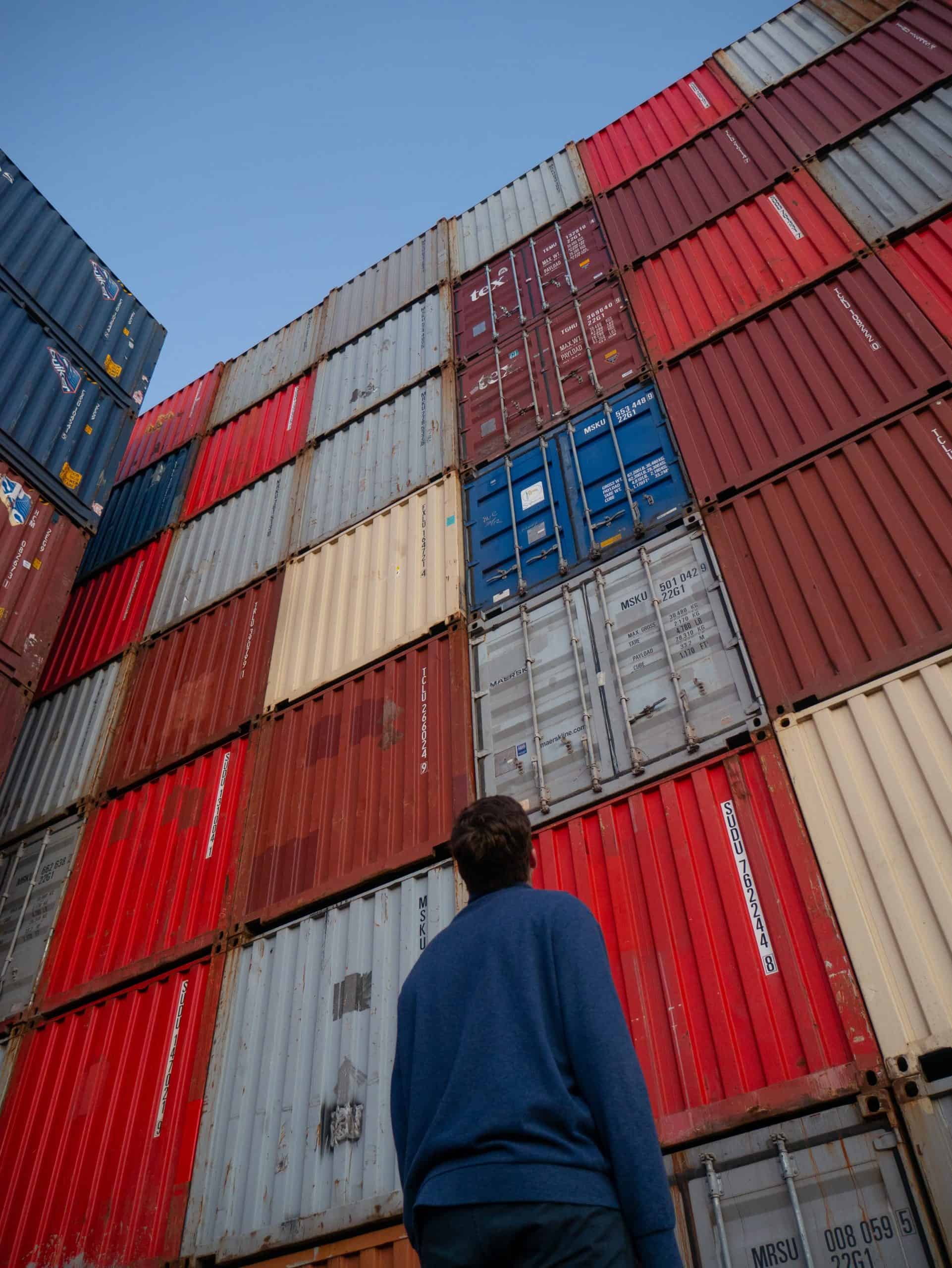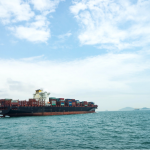2024 Expert Freight Rate Outlook in Wake of Red Sea Attacks & Rate Spikes
What should shippers expect when it comes to freight rates in 2024? Predicting trends is never an easy thing, as international shipping’s freight rates have always been highly volatile. Shippers got another taste of that volatility to start out 2024 with spiking freight rates in the wake of attacks on container ships in the Red Sea. In the last post, we talked about how, starting next month, shippers could start seeing relief from the surging freight rates. Does that mean freight rates will return to the behavior experts expected of them at that point?
How even did the experts expect freight rates to behave in 2024?

Let’s round up a bunch of industry professional opinions for 2024 freight rates and see some updated expert outlooks in the wake of the Red Sea attacks.
General Combined Outlook Heading into 2024
Not surprisingly, experts’ outlooks on freight rates for 2024 are mixed. However, a majority of international shipping industry professionals expected freight rates to decline in the first half of the year. The second half is where opinions diverged more often. Some experts believed freight rates would continued to decline while others predicted a potential rebound in the latter half of 2024.
Five common key factors influencing freight rates are often brought up by the experts….
Factors Influencing Freight Rates in 2024:
- Global Economic Slowdown: A potential global recession could lead to decreased demand for goods, putting downward pressure on freight rates.
- Excess Shipping Capacity: The ongoing supply chain issues of 2021 and 2022 led to a surge in new ship orders, which are now entering the market and creating an oversupply of shipping capacity. That will potentially drive down freight rates.
- Port Congestion: While port congestion has eased compared to the peak of the pandemic, it can still cause delays and disruptions, impacting costs and influencing rates.
- Geopolitical Tensions: Ongoing conflicts and political instability, like but not limited to what we’ve seen with the wars in Ukraine and Israel, can disrupt trade routes and raise insurance costs, impacting freight rates. This often creates upward pressure on rates.
- Fuel Prices: Fluctuations in oil prices can significantly impact shipping costs, with higher prices leading to increased freight rates.
Let’s get more specific with…
Expert Outlooks
Despite a mixed bag in outlooks, freight rates declining in 2024 was a common theme before the freight rate spike following the Red Sea attacks took place. Here are some of the expert companies and their outlooks for the year:
- UPS Supply Chain Solutions: They predict relatively flat rates for the first nine months of 2024, with a potential for growth and a return to peak season in Q4.
- S&P Global: They expect freight rates to continue declining in 2024, with significant pressure on shipping company profitability.
- Xeneta: Their 2024 Ocean Freight Shipping Outlook report highlights six key factors impacting the market, with a cautious outlook for the first half of the year and a potential for upward correction later.
- Wicker Park Logistics: They see a mixed picture, with LTL (less than container load) rates remaining stable, TL (truckload) contract rates potentially improving, and continued challenges for the ocean freight market.
Here’s a prominent voice from different sectors of the international shipping industry on 2024 freight rates:
Air Freight:
- Eric Kulstad, Vice President of Global Accounts at Airblox: “We expect air freight rates to remain under pressure in Q1 due to continued economic uncertainty and weak demand. However, a gradual recovery is possible later in the year, particularly for certain high-value goods and industries.”
Ocean Freight:
- Maersk Line CEO Søren Skou: “The first half of 2024 will likely see continued downward pressure on ocean freight rates due to overcapacity and weak demand. However, we remain optimistic about a gradual recovery in the second half, especially if peak season demand rebounds.”
Intermodal:
- Jett McCray, President of the Intermodal Association of North America: “We’re seeing renewed interest in intermodal transportation from shippers seeking cost-effective alternatives to truckload shipping. This could lead to some stabilization or even modest growth in intermodal rates in 2024.”
LTL:
- Gene Seroka, Chairman and CEO of the American Trucking Associations: “The LTL market remained relatively stable in 2023, and we expect this trend to continue in 2024. Capacity may tighten slightly later in the year, but overall rates are likely to remain predictable.”
Overall, the outlook for freight rates in 2024 was uncertain before the Red Sea attacks happened. However, downward pressure was generally expected for the beginning of the year. Economic and capacity factors played largely into first half falling freight rates. Looking across expert opinions, there was a decent amount of optimism (though maybe not such a positive from shippers’ perspective) for a potential rebound in freight rates later in the year. That potential rebound was dependent upon economic recovery and peak season demand.
However, because of Houthi Rebels, backed by anti-Israel Iran, targeting container ships in the Red Sea, keeping container ships from traversing the Suez Canal when tightening restrictions for crossing the Panama Canal were already happening, the start of 2024 for freight rates was very different than expected.
Impact of Red Sea Attacks
Freight rates soared in the immediate aftermath of the Red Sea attacks. The fallout on shipping included the following:
- The attacks have caused port closures, rerouting, and increased insurance costs, adding significant surcharges to shipping routes traversing the Red Sea.
- These disruptions directly impact Asian-European and Asian-East Coast US lanes, which previously saw significant price drops.
- Uncertainty regarding future attacks creates a volatile market environment, making long-term predictions challenging.
Additional Considerations:
- Geopolitical developments in the region and potential escalation of violence could further exacerbate the Red Sea situation.
- Alternative routes bypassing the Red Sea, like the Cape of Good Hope, are longer and more expensive, but may become more popular if disruptions continue.
- The long-term impact of the attacks on supply chains and regional trade patterns remains to be seen.
After the Red Sea attacks, many industry professionals updated their 2024 freight rates outlook….
Updated Expert Outlooks
- S&P Global: While they still predict overall downward pressure on freight rates in 2024, they acknowledge the Red Sea situation could lead to shorter-term spikes and regional imbalances.
- Xeneta: Their revised outlook emphasizes the Red Sea disruptions as a wild card, increasing their caution for the first half of the year and suggesting a more volatile market than previously anticipated.
- Maersk Line CEO Søren Skou: While maintaining optimism about a second-half recovery, he acknowledges the Red Sea situation creates additional uncertainty and may delay the normalization of freight rates.
- FreightWaves: Recent articles highlight the significant impact of the attacks on specific lanes, with experts predicting sustained high rates for affected routes even if overall market trends show decline.
Conclusion:
The Red Sea attacks have injected a new layer of complexity and uncertainty into the 2024 freight rate outlook. While predictions for a general downward trend in rates still hold, expect volatility and potential spikes, especially on affected routes. Shippers should closely monitor the situation, explore alternative options, and – for BCOs (beneficial cargo owners who deal directly with carriers – seek flexible contracts to navigate the evolving market landscape.
The decreased shipping demand from the arrival of the Chinese New Year next month could help bring spiking freight rates down and improved stability of freight as carriers adjust to alternative and longer shipping routes, as discussed in the previous blog post.
By staying informed and adaptable, shippers can minimize the impact of situations like the attacks in the Red Sea on their shipping costs and increase smoother deliveries of their goods throughout 2024. It’s an ongoing objective of Universal Cargo’s blog to do just that: keep you updated on information that provides a more comprehensive and current perspective on international shipping and its freight rate outlooks, factoring in the recent developments like what’s happening in the Red Sea.
Thus, keep coming back for more about what’s happening in international shipping, and feel free to contact us anytime to help you with your importing and exporting needs.





